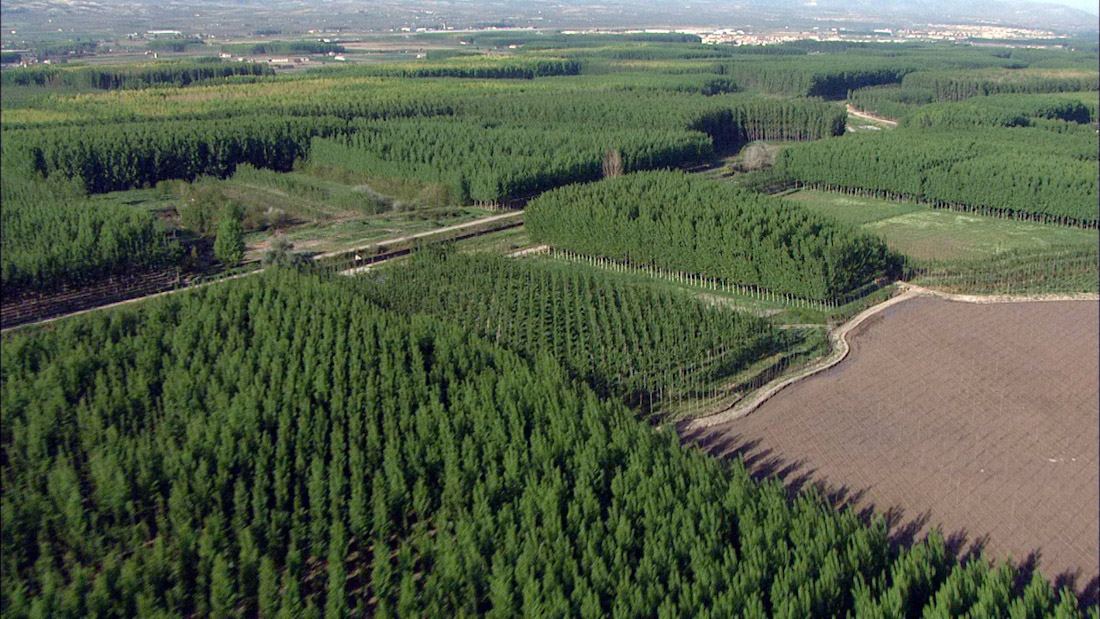In the same sense, the delegate of Development, Territorial Articulation and Housing of the Junta de Andalucía in Granada, Antonio Ayllón, also stressed that, by transferring the bulk of the process of the work to the factory, industrialized construction reduces occupational accidents and creates highly skilled jobs. Ayllón, as well as the provincial delegate of Industry, Energy and Mines, Gumersindo Fernández, highlighted the Andalusian Government’s commitment to this construction system, which will contribute to putting more accessible and sustainable housing on the market. Thus, he recalled the collaboration agreement signed between the Agency for Housing and Rehabilitation of Andalusia (AVRA) and the UGR to support the creation of an industrial ecosystem of poplar and pine products through the construction of a social housing building for young people in the Azulejera of Granada, currently in the project phase.
The general director of Forestry Policy and Sustainability, José Ramón Pérez, exposed the paradox that Andalusia, with 40% of wooded area and a strong rural depopulation due to the abandonment of the work of the forest, imports wood from northern Spain and Europe. Perez has predicted “a revolution”, once the regional Forestry Law comes into force, which abandons the “excessive protectionism” to promote sustainable forestry.
ANDALUSIA BRAND WOOD
The coordinator of LIFE Wood for the Future and professor at the ETS of Building Engineering of the University of Granada, Antolino Gallego, explained that in industrialized construction elements of the work as walls, slabs or facades are designed by technical engineering offices and processed in the industry with digitized machines, so the assembly is much more accurate, fast and efficient. “Wood is an ideal raw material in this type of construction, not only because of its environmental advantages, but also because of its technical characteristics: it is flexible, resistant and easy to cut and shape as needed,” he said.

Antolino Gallego, during his presentation
Gallego pointed out that in Spain there are currently three factories producing wood building products, all of them in northern Spain. However, while the supply of such elements has grown by 10%, demand has increased by 300%, largely thanks to the “colossal leap” undertaken by communities such as the Basque Country, Navarra and Catalonia, where wood has been incorporated as a material in public housing developments, as well as in libraries, schools or nursing homes.
In this regard, he insisted on the need for Andalusia also have factories of these products to provide an outlet for the large amount of raw material that represent the forests, while providing an opportunity for green jobs for young people in rural areas and prevent major fires.
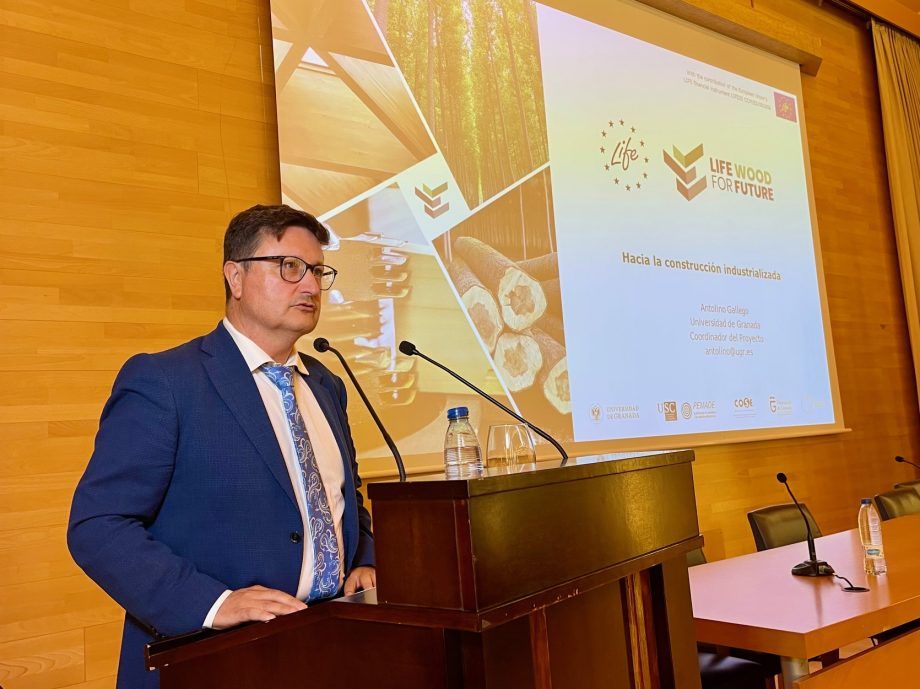
Antolino Gallego, UGR
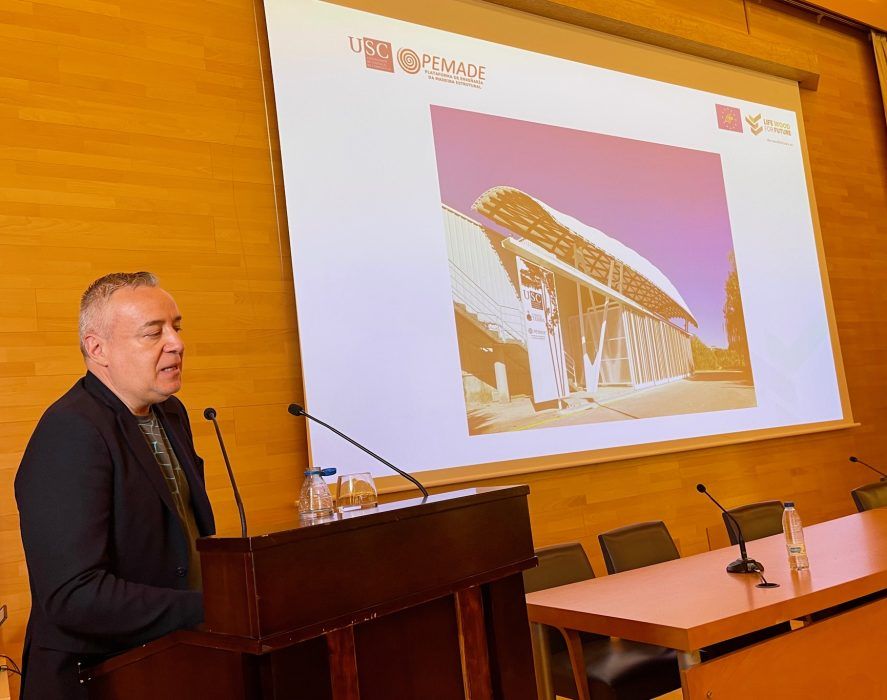
Manuel Guaita, PEMADE
In this regard, the director of the Structural Wood Engineering Platform (Pemade) of the University of Santiago de Compostela, Manuel Guaita, recalled that in Galicia the turning point came with the Impulso Verde demonstration building, built with Galician pine by the City Council of Lugo, which led to the creation of the first industry in the sector in the region, and hopes that in the near future Andalusia will also use 0 kilometer wood in construction.
SUCCESS CASES
Several success stories were presented at the conference, such as the PassivHaus-standard, energy self-sufficient single-family house built in Ogíjares and designed by the Granada firm Bonsái Arquitectos, the first to incorporate, in addition to cross-laminated timber (CLT), a poplar and pine slab manufactured within the framework of the LIFE project.
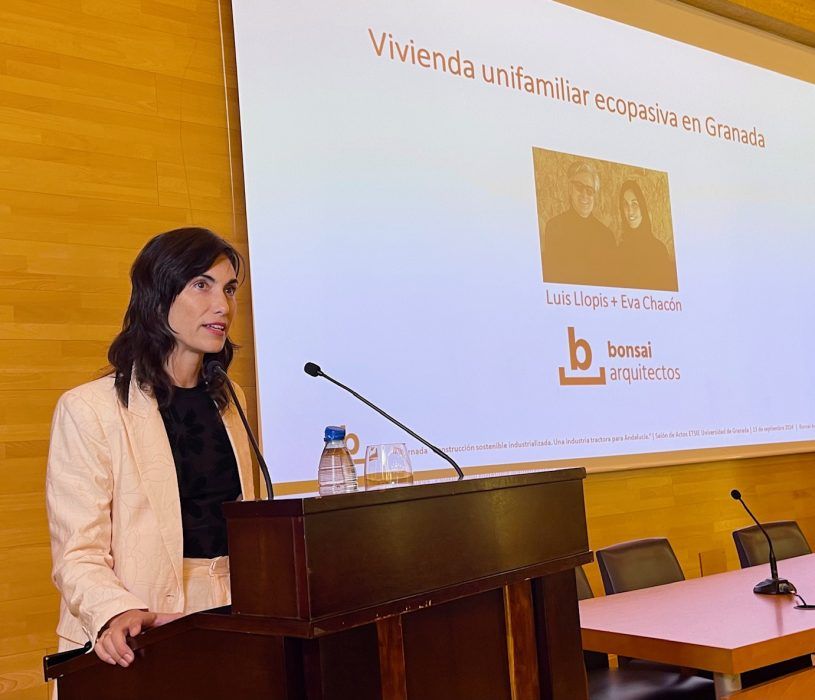 Eva Chacón, Bonsai Architects
Eva Chacón, Bonsai Architects
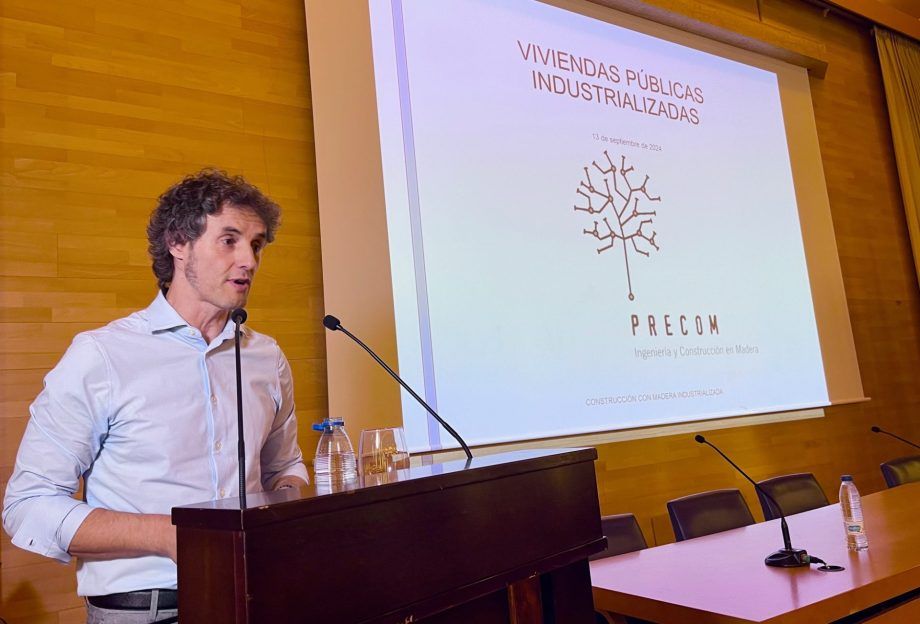 Fernando Larraza, PRECOM
Fernando Larraza, PRECOM
Fernando Larraza, manager of the Basque company PRECOM, presented a development of four housing blocks, two of them VPO, made with CLT panels and “without a gram of concrete” in Leiza (Navarra), whose structure was erected in just five weeks. Larraza also highlighted the versatility of wood in the rehabilitation of buildings, and gave as an example a 130-year-old residential building in which the idiosyncrasy of a former residence of workers of Altos Hornos de Sestao (Vizcaya) was maintained.
Carolina Santiago, delegate of the Passivhaus Building Platform (PEP) in Andalusia, showed the audience some examples of industrialized construction that have obtained the Passivhaus standard in this region. “They are buildings for better living, with high comfort and less energy demand,” she said. The speaker pointed out that maximum energy efficiency can also be achieved in refurbishment, and gave as an example the 20 public housing units in the town of Muros de Nalón (Asturias), refurbished with wood structure and that have the Passivhaus seal; “a project that stands out for the reduced delivery time and for incorporating sustainable material with low environmental impact”.
 José Mª Quirós, AEDAS Homes
José Mª Quirós, AEDAS Homes
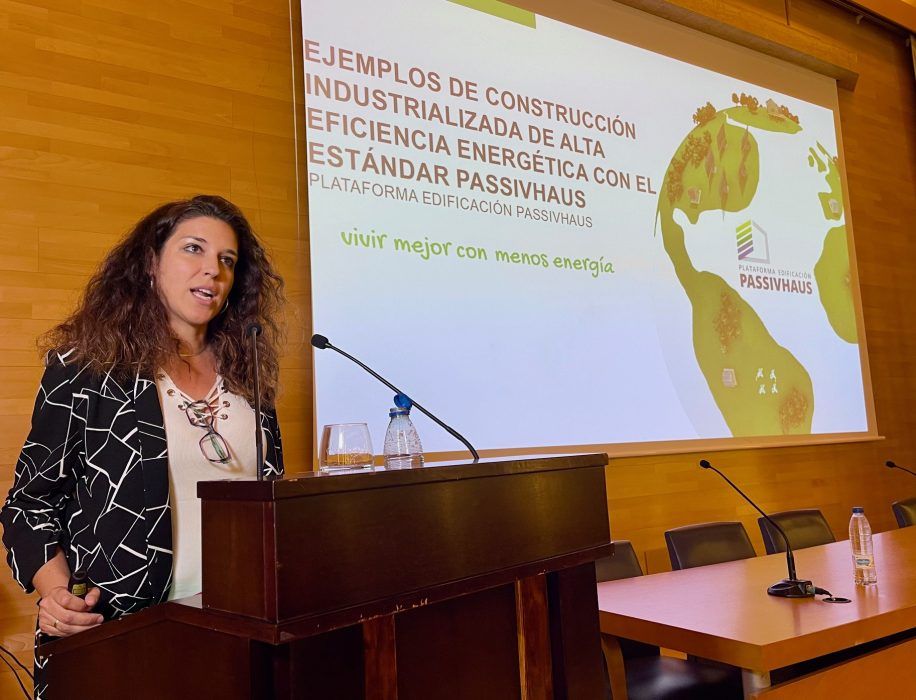 Carolina Santiago, PEP
Carolina Santiago, PEP
 Rubén Aguilar, CIMPRA
Rubén Aguilar, CIMPRA
José María Quirós, Industrialization Delegate of AEDAS Homes, defended that wood is a perfect material for industrialized construction due to its lightness – essential to reduce transportation costs -, its virtues as a thermal insulator and its versatility in design. Quirós emphasized that the cost reduction that this system allows reduces risks and increases profitability. Aedas Homes has built more than 5,000 homes with an industrialized system.
The control of the product in the factory itself cannot be improved,” said Rubén Aguilar, research director at the Sevillian company CIMPRA. A level of quality is achieved in the factory that cannot be achieved on site”.
During the debate, the obstacles holding back the development of industrialized sustainable construction in Spain were also highlighted, including financing problems, as some banks are reluctant to lend money for projects until the manufactured parts are assembled on site, or the lack of training of many architects on wood structures -curricula are outdated-, which makes it difficult for them to prescribe these materials. “There is a lot of misinformation from the public, developers and administrations,” says Francisco Martinez-Cañavate, secretary general of the ACP. As for price, some speakers note that wood is currently competitive as a substitute for concrete and steel.
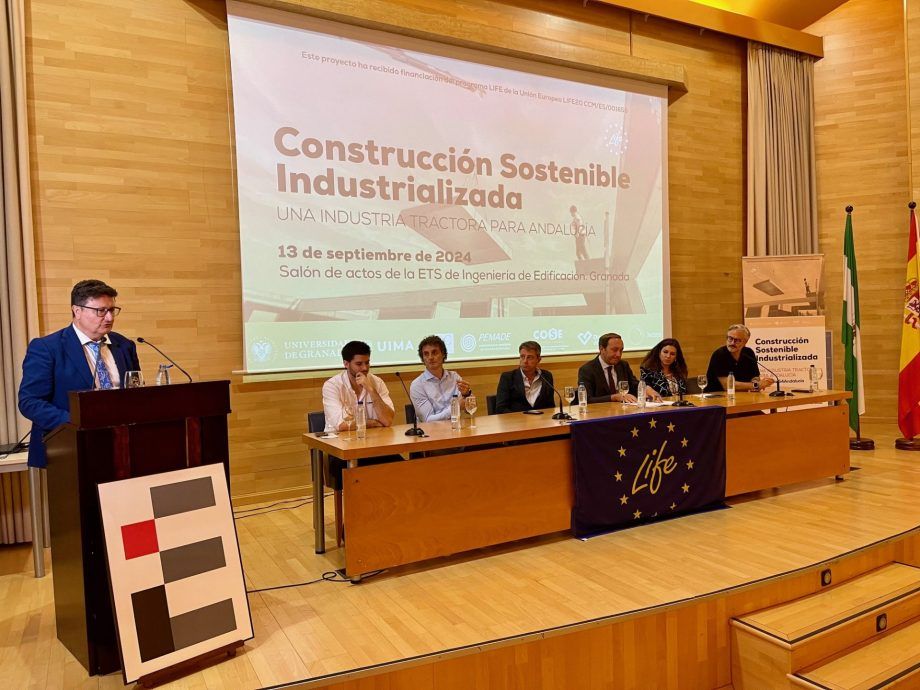 The event closed with an interesting debate on the future of industrialized construction.
The event closed with an interesting debate on the future of industrialized construction.




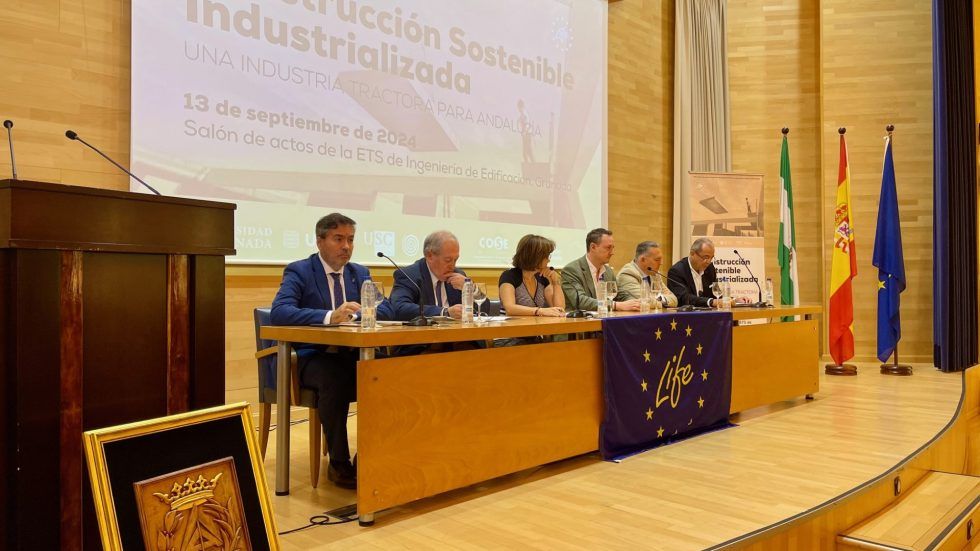



 Eva Chacón, Bonsai Architects
Eva Chacón, Bonsai Architects
 Fernando Larraza, PRECOM
Fernando Larraza, PRECOM
 José Mª Quirós, AEDAS Homes
José Mª Quirós, AEDAS Homes
 Carolina Santiago, PEP
Carolina Santiago, PEP
 Rubén Aguilar, CIMPRA
Rubén Aguilar, CIMPRA
 The event closed with an interesting debate on the future of industrialized construction.
The event closed with an interesting debate on the future of industrialized construction.
